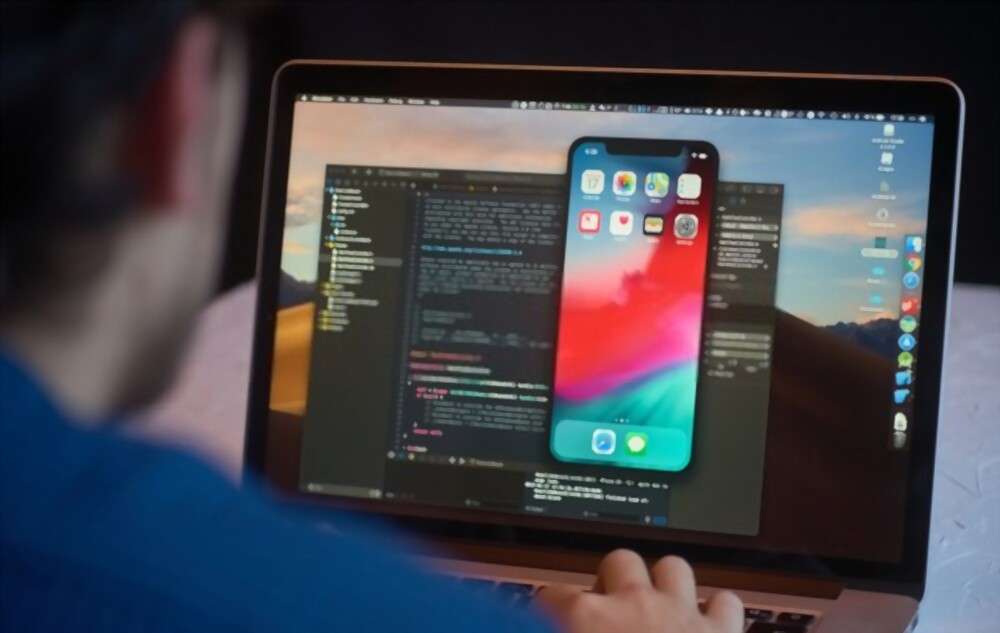
29 Nov Top 10 Tips To Enhance Your Mobile App Development Process
The Mobile App Development Process
Mobile apps have rapidly changed from “nice to have” to “must have.” Mobile apps now play a major role in how consumers perceive businesses and how they can connect with them. Mobile App Development plays a crucial role in today’s business world.
Mobile apps provide access to an astonishing range of demographics, and failing to capitalize on that is no more just a matter of passing along profits; it is detrimental to your business. Get your mobile app developed if you need the right edge in your budding business. Mobile apps must be built over time, and in some cases, the length of time can greatly affect the final product.
In this article, we will have a look at the top 10 tips to enhance your mobile app development process to the next level.
To get our basics clear lets to understand –
App Development Process – What Is It?
App development involves creating applications for all types of handheld devices. It involves many different stages, including coding, testing, and deployment to appropriate platforms. When creating an app, developers must follow helpful advice to achieve the greatest outcomes.
The Methodology Applied in App Development
The process of developing an app needs to be divided into organized stages to guarantee successful outcomes. Without pre-planned stages, it is challenging to monitor quality, and certain defects could not be discovered until the very end.
Due to this, the app may require a lot more time to develop, which causes delays and missed deadlines. So the key is for the development team to create a clear plan before they start.
The numerous stages involved in the mobile app development process include but are not limited to:
1. Analyzing the requests given by the client in detail
Every plan should start with laying the groundwork and outlining the restrictions you must adhere to. The first step involves strategizing and laying out the plan for how we are going to execute. The step-by-step process is laid down.
This is crucial since establishing goals for the app will be made easier if you follow the right method when creating it. Setting expectations for the performance of the app is also required as part of the requirement analysis. When you do this you are actually laying down the map for the whole process.
2. Discuss the app development requirements in detail
As a customer, you should provide any helpful information to the app development company such as your budget, the kind of app you wish to launch, and the timeline. You can use it as a prototype for your project developer if there is an existing app that is comparable to what you have in mind. The more information you can obtain in this scenario, the better.
For mobile app development companies, it is a must to advise and discuss with the clients. It is the client who has the proposed idea and he knows best what is to be done. When this happens, sales staff can help by setting up conversations or emails with potential clients. They can obtain any relevant information from the clients during their communication. Once it is finished, they can produce breakdowns of the development process as well as suggestions for the clients.
3. Having NDA is crucial
App development is an important topic that has to be treated seriously. It is now time to officially launch your app development by signing an NDA agreement after completing the aforementioned stages. You can be certain that the developers will protect any information or ideas you have given them in this way.
The majority of the time, after this agreement is signed, the actual work on your application can start. It makes sense given that this legally binding contract contains information on, among other crucial items, the required project specifications, file-sharing protocols, and anticipated milestones after particular periods.
4. Wireframing
Before incorporating visual representations and information, wireframes are generated early in the development process. With one, you can easily determine the development duration and refine and rearrange your tactics to ensure a smooth development process.
In this phase, make sure you have a clear understanding of how your intended features and development concepts will integrate to produce a functional system.
5. Mobile app development is for the user experience and user convenience.
Organizations should work to make their applications seem better overall so that they fit the aesthetic and theme they are trying to create. The app’s relevancy will be established by the subject, which is based on current trends.
User experience, or UX, refers to what a user goes through when utilizing your application. Designers seek to make modifications when working on this aspect of the design to make the application as user-friendly as possible without sacrificing the application’s key capabilities.
Additionally, this step of the process concentrates on the UI/UX component of the program. Working on an application’s UI/UX design entails enhancing and optimizing it to eliminate duplication produced by menus and lists included within the program.
After completing this stage of the process, the final result should be an intuitive app that guarantees user-friendly interaction without requiring the user to go through a complicated menu to locate what they’re searching for.
6. The core part – App development process into sprints
The team must adhere to a structured app development process to produce a successful app.
Setting milestones is a crucial piece of advice during this stage. You can divide a lengthy procedure into two-week sprints if it takes many months. After each phase, the team can show the client what has been done so far and perhaps make a demonstration.
By doing this, you may spot early on any differences between what you are producing and what the customer genuinely wants and make the appropriate adjustments. Additionally, using this method, you won’t need to make as many adjustments after the program is finished.
7. Testing, testing, and testing
The mistake is fairly frequent. While some of these errors are simple to correct, others are significant and even expensive over time.
Not only is testing required to keep expenses down, but it also contributes to the good quality of the generated software. A bug patch will cost more the further along in development you are. Testing should therefore follow development. It goes through testing after features are completed to remove any bus and kinks.
8. Let the word out – The final launch
Launching an app is a laborious job. But if you invested time and money in creating the app, you should be prepared to spend money on marketing as well. Just before the launch, involve the media or hire a PR agency to do that for you. You can do this alone or hire an advertising agency that helps you create a lot of awareness and download rates if the news item is posted on a well-known blog.
Additionally, you may create a unique landing page specifically for the app that has an opt-in form on it. assisting you in generating leads.
9. Launching the app in the Play Store/App Store
You should consider the app’s store page before submitting it to a store, such as Google Play or the Apple Store. Keep in mind that many customers find the apps by typing specific words into the store’s search field. Do you ASO (App Store Optimization) properly if you want to bring visibility to your app. There is a predetermined character limit.
Therefore, use caution when choosing your keywords. To examine and contrast various terms, use a tool. To make the most of it, follow SEO guidelines.
10. Collect Feedback
Maintenance comes after all other steps in the development of an app. Keep updating your app as new versions of the OS and bugs keep popping up every day. The day your app stops updating and upgrading the decay of the app business starts. Your app will require new features as technology develops and user demands get more intricate. You will begin to receive feedback as soon as people download the app to their smartphones, so keep that in mind. Utilize this criticism when you create the upcoming iteration of your software.
The sole difference between the initial development process and post-production development is that the latter will be concentrating on a certain feature or capability. With your developer, you can come up with an after-launch strategy.
Wrapping Up The Mobile App Development Process
The above-mentioned ten pointers will assist you in developing an app that satisfies your goals as well as those of your users, together with the assistance of a skilled mobile product development team.



 +91 93191 24877
+91 93191 24877






